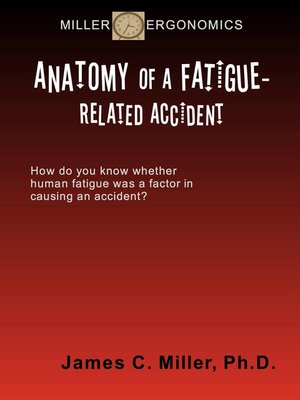
Sign up to save your library
With an OverDrive account, you can save your favorite libraries for at-a-glance information about availability. Find out more about OverDrive accounts.
Find this title in Libby, the library reading app by OverDrive.



Search for a digital library with this title
Title found at these libraries:
| Loading... |
How do you know whether human fatigue was a factor in causing an accident? The fatigue scorecard and scoring procedures described here will help you decide. It is relatively easy for fatigue experts to see fatigue-related factors in mishaps. However, most accident investigators do not have this insight. Nor do accident investigators have a tool for determining whether fatigue may have been a factor in a mishap. Fortunately, there is now a reasonably straightforward approach to deciding whether a mishap may be fatigue-related. Seven fatigue indicators are explained here, each with quantitative characteristics. These indicators are meant to raise "red flags" with respect to the likelihood that human performance may have been impaired by fatigue at the time of a mishap. Based upon my experiences over the last four decades, the scorecard should be useful in the field in mishap investigations in commercial and non-commercial highway accidents; mishaps in commercial, general and military aviation; errors in aviation maintenance; mishaps in military and commercial maritime operations; accidents in rail operations; and errors committed in control rooms and command and control centers.






